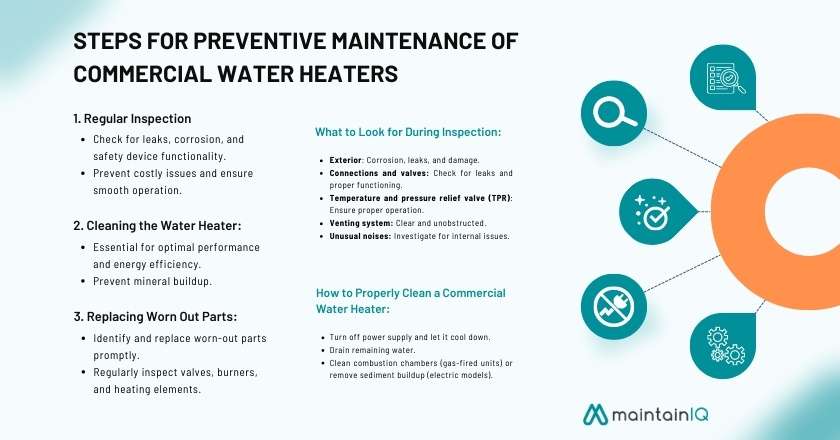Ensuring a reliable supply of hot water is crucial for a comfortable home, and a key component to achieving this is consistent preventative maintenance on a hot water heater includes regular inspections and upkeep. Neglecting this vital task can lead to unexpected breakdowns, costly repairs, and even the need for premature replacement. The good news is that implementing a proactive approach to preventative maintenance on a hot water heater includes a few simple steps can significantly extend its lifespan and maintain its efficiency, saving you money in the long run. This, in turn, contributes to a more sustainable lifestyle by reducing energy consumption and minimizing waste.
Why Preventative Maintenance is Essential
Think of your hot water heater as the heart of your plumbing system. Like any mechanical device, it requires regular attention to function optimally. Ignoring preventative maintenance can result in several negative consequences:
- Reduced Efficiency: Sediment buildup and mineral deposits can insulate the tank, forcing the heater to work harder and consume more energy.
- Increased Risk of Leaks: Corrosion can weaken the tank over time, leading to leaks and potential water damage.
- Shorter Lifespan: Neglecting maintenance can significantly shorten the lifespan of your hot water heater, requiring you to replace it sooner than necessary.
- Unexpected Breakdowns: Imagine taking a cold shower in the middle of winter! Preventative maintenance can help you avoid these unpleasant surprises.
Simple Steps for Hot Water Heater Maintenance
Fortunately, performing basic preventative maintenance on your hot water heater is a relatively straightforward process. Here are a few key steps you can take:
1. Flush the Tank
Sediment buildup is a common problem that can reduce efficiency and damage the tank. Flushing the tank annually removes this sediment.
- Turn off the power or gas to the heater.
- Allow the water to cool down.
- Connect a hose to the drain valve at the bottom of the tank.
- Run the hose to a safe drainage area.
- Open the drain valve and let the tank flush until the water runs clear.
- Close the drain valve and disconnect the hose.
- Turn the power or gas back on.
2. Check the Anode Rod
The anode rod is a sacrificial metal rod that protects the tank from corrosion. It should be inspected and replaced every few years.
3. Inspect for Leaks
Regularly check around the base of the tank and all connections for any signs of leaks. Address any leaks promptly to prevent further damage.
4. Insulate the Tank and Pipes
Insulating the tank and pipes can help reduce heat loss and improve efficiency. This is especially important in colder climates.
By implementing these simple preventative measures, you can drastically improve the functionality and longevity of your hot water heater. Regular attention prevents costly repairs and replacements, and contributes to the overall efficiency of your home.







